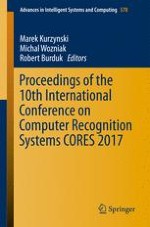2018 | OriginalPaper | Chapter
Enhancing English-Japanese Translation Using Syntactic Pattern Recognition Methods
Authors : Thomas McMahon, B. John Oommen
Published in: Proceedings of the 10th International Conference on Computer Recognition Systems CORES 2017
Publisher: Springer International Publishing
Activate our intelligent search to find suitable subject content or patents.
Select sections of text to find matching patents with Artificial Intelligence. powered by
Select sections of text to find additional relevant content using AI-assisted search. powered by
